I had a dream last night, in which my sister and I were guests in the house of a Shanghai family: card-carrying supporters of the Communist Party. I felt a gulf between us, that we could not speak across, because our brief conversations always stayed within a particular scaffolding of thought. Our hosts moved only within these thought structures, these bridges crossing troubled waters that they wished never to swim in.
In the dream, my sister and I had been rescued from a downed craft somewhere in the north of China. Our rescuers had brought to this clean and pleasant home, to wait for our two governments to work out our journey back to Canada. We were ragged strangers in this house, and though our thoughts could easily question the Communist Party and just about anything else, we lacked what our hosts had: belonging.
At first, I wondered why our hosts wouldn't dive off their bridges into the turbulent, wondrous waters of life. Then I came to understand that these bridges gave them what they needed. Not on the deepest level, perhaps, but could I say I had met those deep needs?
We had freedom of thought, my sister and I, but we would remain outsiders even when we returned home, for ours was a nation of outsiders, of individuals unwilling to fit into a universal social system. Instead of families, we had spread-out units. Instead of dependable helpers and dependable roles, we had individuals struggling to work out their roles.
At least our hosts, in some sense, belonged. At least, if they stayed on those bridges, they would receive the basic support they needed.
I feel the interesting question here is not, ‘Is this or that belief true?’ but rather, ‘Why do people believe what they do?’
Belonging, perhaps. A sense of safety, a kinship with the world. The assurance of a good afterlife.
What will they lose if they lose that belief? And what might they stand to gain if they let go of that belief?
Now, personally, I reckon that reality doesn't depend on our beliefs. If trees are sentient beings, they don't depend on my belief to become so. If gods are real, they don't need me to believe them into reality.
But here's another way to look at belief. If a fir tree is a sentient being, in fact, then my belief that it is so may open the channel between us, so that I can perceive the fir tree in a deeper way. If I believe this fir tree is just wood, that channel may shut.
The same goes for myself and other humans. If I hold the belief that this man across from me came to his decisions for good reasons, I'm open to hearing him. Those reasons may be mentally rational, or they could be more deeply rational: from within his emotions and psyche. Either way, my belief in the worth of his reasons keeps the channel between us open.
And so this brings us to another way to look at beliefs: as a web of openings and closings surrounding us. The openings allow parts of reality in, and the closings keep parts out. By adjusting these beliefs, our experience of reality changes.
By adjusting our beliefs, our experience of reality changes.
Many character arcs track changes in this web of belief. A character may be hold racist views, with no channel open for the humanity of certain other humans. But by rubbing shoulders with such humans, a part of our character's web that was closed now opens, letting in sunlight bounced off this other human.
Or, as the story progresses, an opening may close. This might be a tragedy, as events transpire to turn friends against each other as old prejudices cinch in to obscure their vision.
Yet a closing need not be a tragedy; a closing could be a character's protector. Picture a mother and her child. The child was born a girl, but isn't so sure that's who she is inside. The mother is intent on fitting her child into the same gender role that she was put into, so much so that she becomes abusive to her child. The child was born open to her mother, believing her to be a source of love and support, but gradually, this opening closes. When the child is old enough, they pull away, believing their mother to be small-minded and cruel to the core.
Well, the mother may not be cruel to the core, but this closing protects the child from further harm, and allows them to get some distance, to find some people who understand and support them. This closing, this belief that the mother is inherently bad, allows the child to step away and heal. Later, that belief may change and open, allowing the child to see their mother's own trauma, which formed her own belief web, her own shifting pattern of openings and closings. But in the meantime, the child has some space to heal.
Now, in this exploration of belief, I feel us reaching the limits of this web analogy. There are either holes or webbing. Open or closed. There is no part-way, no translucent parts, and no varied colors.
But belief is not just openness or closeness to reality. A fuller way to look at it might be this: beliefs are the stories that we tell about reality.
Beliefs are the stories we tell ourselves.
They are filters through which we see the world. They are prisms through which sunlight passes into our eyes.
We see the world through stories. What is a tree? A person? Wood? An ancestor? Is the earth feminine, masculine, neither, both? Kind, cruel, or indifferent?
What stories are your characters looking through? What stories are you looking through?
And so, instead of a web surrounding a character, instead of an orb with simple openings and closings, imagine, if you will, a constantly shifting dance of stained-glass panels. Each panel is a belief, each angle of that glass an angle through which the character can see the world, each color within that prism the emotional tone of that belief.
Picture a woman sitting in her living room. She sees a neighbor outside throwing a ball to his son. A red prism in her mind says this man is a bad father. A blue prism, another angle of her mind, reflects this man's fatherhood as another way of expressing his love for his son. A green angle of this prism reflects how a man can love his child in the same way that she herself loves her own child. A yellow angle of the prism tells her that this man is one of the good people in the world, a violet angle reflects on how she can come to love the man and his son, can appreciate their laughter, can open herself to feeling the joy between them, and all these colors twirl and twist as she leans back to peer at the neighbor and his son through a new angle, a new prism.
As the character’s beliefs dance and twirl within her, the colors change. Openness becomes closeness. Green becomes red. Yellow softens to blue.
Beliefs are fluid.
There is a dance of belief that happens within each of us, and within each of our characters.
Picture, if you will, a story in which a character opens themselves to a new belief. See them close off to an old belief. See them close off to the belief that they can never be loved, and open to the belief that they can. See them dance, twirl, and spin through all the colors and shades of the rainbow.
Now, you might think this is a recipe for moral relativism, but it’s a call to see the world through the eyes of others, in all its infinite shades and hues. To see that even when someone acts in a way we find reprehensible, that person is likely dancing through their own prism of beliefs. Understanding their dance of belief can help us navigate the complex terrains of human behavior.
And this, my friends, brings us to the power of stories, the power to shape beliefs, the power to challenge and transform beliefs. Stories are vehicles for empathy. They are journeys into the hearts and minds of characters who may be vastly different from ourselves. They invite us to step into someone else's gumboots, to see the world through their bifocals, to move our bones with their dance of belief.
In doing so, stories have the power to expand our own prisms, to deepen our understanding of the human experience, and other experiences. So, let us tell stories that illuminate the dance of belief, that explore the complexity of consciousness, that challenge and transform the filters through which we see the world. Let us tell stories that open hearts and minds, that weave connections across diverse perspectives, and that celebrate the beautiful, intricate dance of belief that shapes the tapestry of our shared reality.
Thank you for joining me on this exploration of the power of fictional and real faiths, the dance of belief.
If you enjoyed this episode, please share it with others who might find it valuable. And if you're interested in joining the weekly story gatherings where we play with the prompts from these episodes, do sign up for the premium membership for just 5$/month. It’s quite a deal. Until next time, keep weaving your stories, keep exploring the dance of belief, and keep shaping the tapestry of our shared reality.
Happy storytelling.








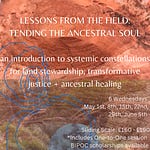
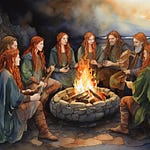
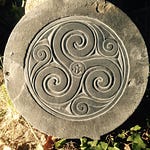
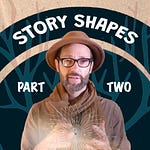


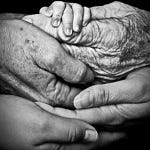
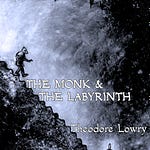
Believe It or Not: The Power of Fictional Faiths. Part 1